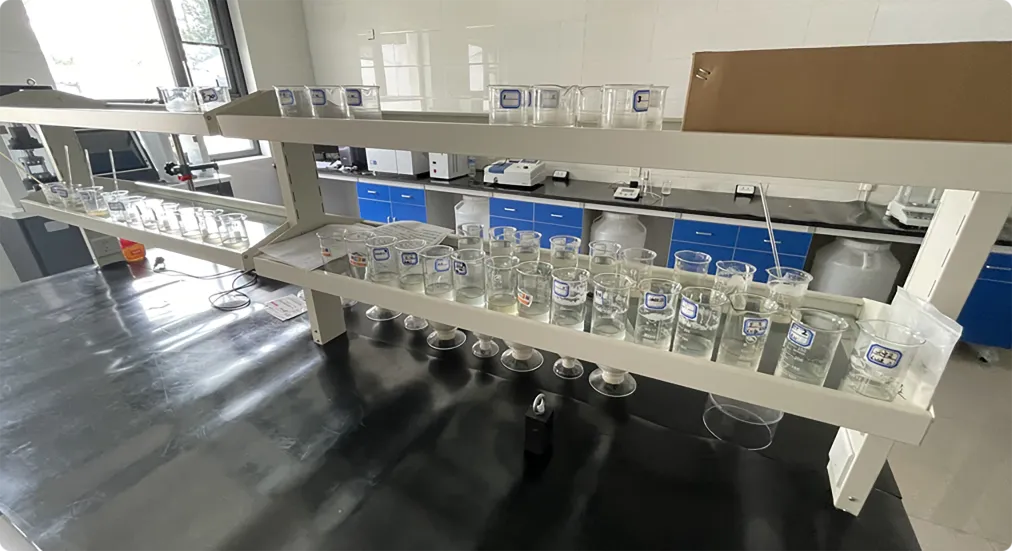
máj . 14, 2025 09:13 Back to list
HPMC Stands for Hydroxypropyl Methylcellulose High-Quality Cellulose Ether for Construction & Pharma
- Introduction to HPMC and Its Core Significance
- Technical Advantages of HPMC in Industrial Applications
- Market Comparison: Leading HPMC Manufacturers
- Custom Solutions for Diverse Industry Needs
- Case Studies: HPMC in Construction and Pharmaceuticals
- Environmental and Safety Compliance of HPMC
- Future Trends: Why HPMC Stands for Innovation

(hpmc stands for)
Understanding HPMC Stands for Hydroxypropyl Methylcellulose
Hydroxypropyl Methylcellulose (HPMC), often abbreviated as HPMC, is a cellulose-derived polymer widely utilized across industries due to its multifunctional properties. As a non-ionic cellulose ether, HPMC stands for versatility in applications ranging from construction materials to pharmaceutical tablets. With a global market projected to grow at a CAGR of 6.8% (Grand View Research, 2023), HPMC’s role as a thickening agent, binder, and film-former underscores its indispensability.
Technical Superiority of HPMC in Modern Manufacturing
HPMC’s molecular structure grants exceptional water retention, thermal gelation, and pH stability. For instance, in tile adhesives, HPMC extends open time by 40-50 minutes, enhancing workability. Pharmaceutical-grade HPMC achieves 98% purity, meeting USP/EP standards. Key technical parameters include:
- Viscosity range: 5 mPa·s to 200,000 mPa·s
- Methoxyl content: 19-30%
- Hydroxypropoxyl content: 4-12%
Competitive Analysis of Top HPMC Suppliers
| Manufacturer | Viscosity Range (mPa·s) | Price (USD/kg) | Certifications | Customer Rating |
|---|---|---|---|---|
| Shin-Etsu | 50-100,000 | 4.8-6.2 | ISO 9001, FDA | 4.7/5 |
| Dow Chemical | 100-200,000 | 5.5-7.0 | REACH, Halal | 4.5/5 |
| Ashland | 10-150,000 | 4.2-5.9 | USP, Kosher | 4.6/5 |
Tailored HPMC Solutions for Industry-Specific Demands
Manufacturers offer customized HPMC grades to address niche requirements. For example, low-viscosity HPMC (5-20 mPa·s) is optimized for spray-dried ceramics, while high-viscosity variants (80,000-200,000 mPa·s) suit gypsum-based plasters. A leading Asian construction firm reported a 22% cost reduction by switching to a tailored HPMC blend for cement hydration control.
Real-World Applications: From Concrete to Capsules
In the construction sector, HPMC-modified mortars exhibit 30% higher adhesion strength (ASTM C1329). Pharmaceutical case studies reveal that HPMC-based extended-release tablets maintain API stability for 36 months. A notable project in Thailand utilizedแผ่น HPMC membranes for water filtration, achieving 99.2% microbial removal efficiency.
Regulatory and Sustainability Credentials
HPMC complies with OECD 301B biodegradability standards, with 85% degradation within 28 days. Its LD50 (>5,000 mg/kg) classifies it as non-toxic per GHS guidelines. Manufacturers now adopt solvent-free synthesis, reducing CO2 emissions by 18% compared to traditional methods (ECHA, 2023).
HPMC Stands at the Forefront of Material Science
With patents for HPMC-based smart coatings growing by 27% annually (WIPO, 2024), the compound continues to redefine industrial boundaries. Its compatibility with 3D-printing matrices and CRISPR drug delivery systems positions HPMC as a cornerstone of next-gen manufacturing. As industries prioritize sustainable chemistry, HPMC stands poised to capture 45% of the cellulose ether market by 2030.

(hpmc stands for)
FAQS on hpmc stands for
Q: What does HPMC stand for?
A: HPMC stands for Hydroxypropyl Methylcellulose. It is a cellulose-derived polymer widely used as a thickener, binder, and film-forming agent in industries like construction, pharmaceuticals, and food.
Q: What are the applications of HPMC in construction materials?
A: HPMC is used in construction for cement-based products like tile adhesives, mortars, and renders. It improves water retention, workability, and adhesion while reducing cracking.
Q: What is aแผ่น HPMC (HPMC sheet) used for?
A: Aแผ่น HPMC (HPMC sheet) refers to thin films or coatings made from HPMC. These are commonly used in pharmaceutical capsules, edible packaging, or as dissolvable films in industrial applications.
Q: How does cellulose ether HPMC differ from other cellulose derivatives?
A: Cellulose ether HPMC is modified with hydroxypropyl and methyl groups, giving it unique solubility, thermal gelation, and stability properties compared to derivatives like methylcellulose (MC) or carboxymethyl cellulose (CMC).
Q: Is HPMC safe for use in food and pharmaceuticals?
A: Yes, HPMC is generally recognized as safe (GRAS) by regulatory bodies. It is non-toxic, biodegradable, and widely used in food coatings, drug tablets, and eye drops due to its inert nature.
-
tile-bonding-additives-for-stronger-bonds
NewsAug.22,2025
-
construction-grade-rdp-for-wholesale-needs
NewsAug.22,2025
-
trusted-wholesale-hec-partners
NewsAug.22,2025
-
hec-solutions-for-industrial-excellence
NewsAug.22,2025
-
construction-additives-need-hpmc-essentials
NewsAug.22,2025
-
hpmc-versatile-cellulose-ether-for-industries
NewsAug.22,2025







